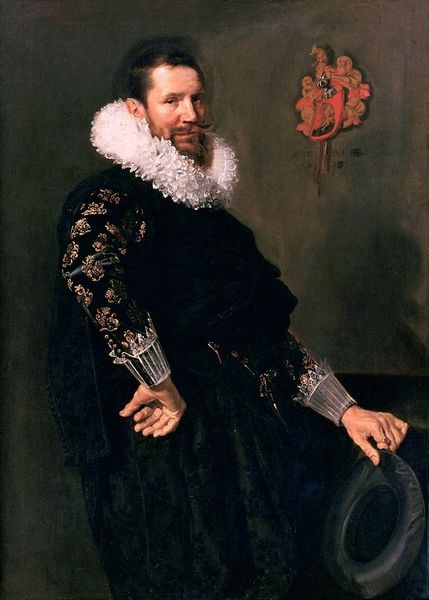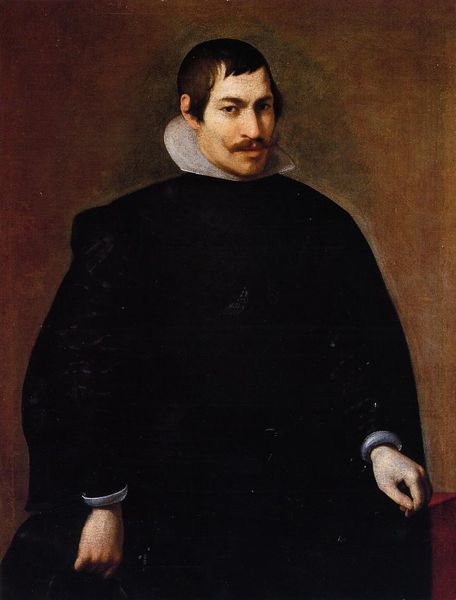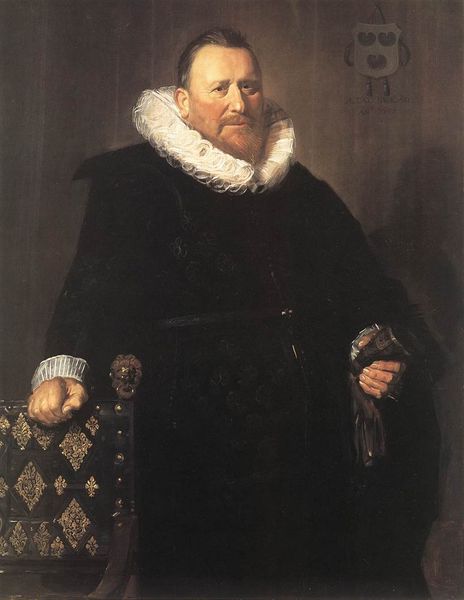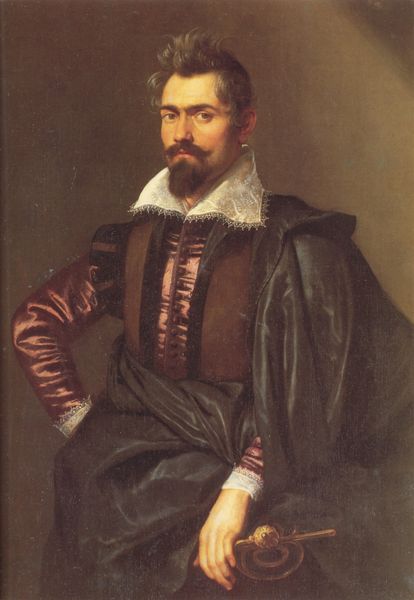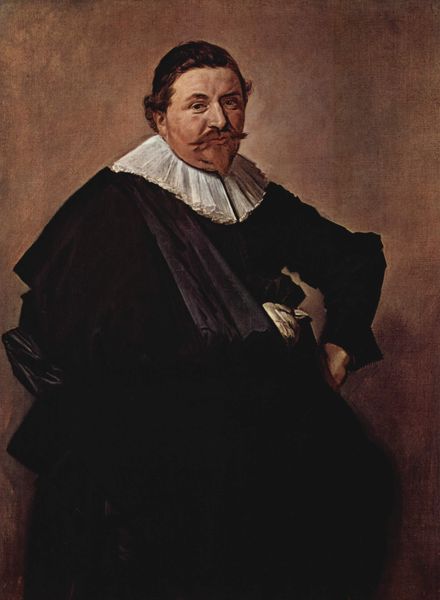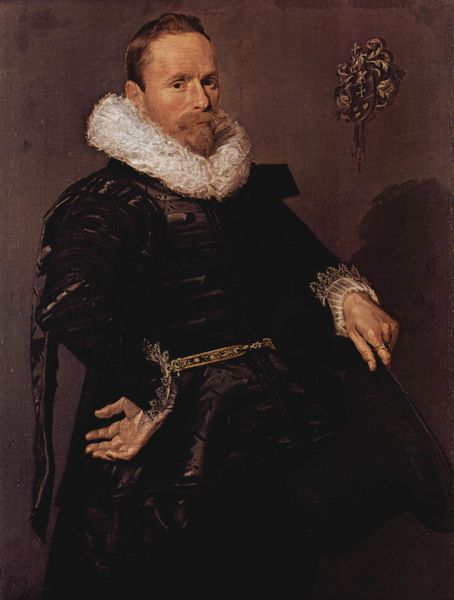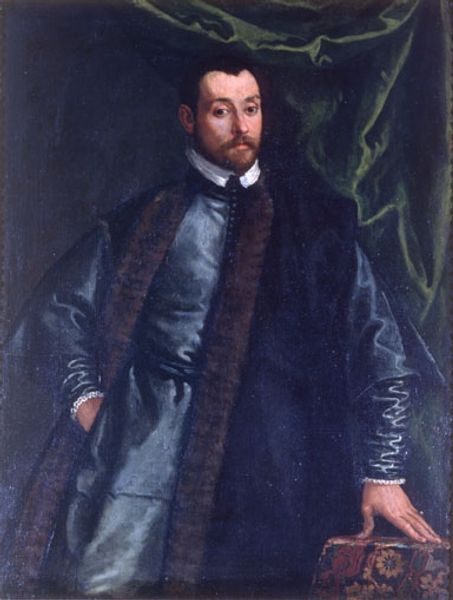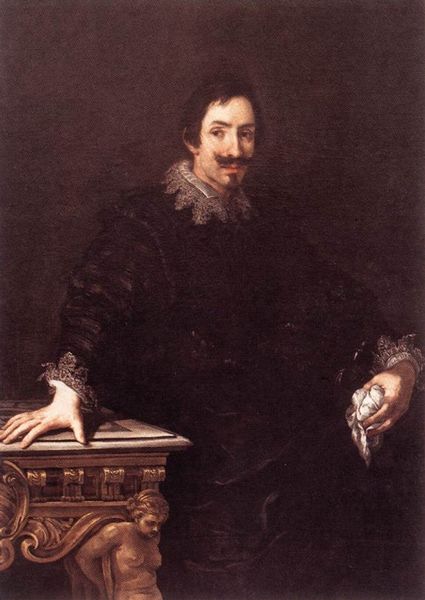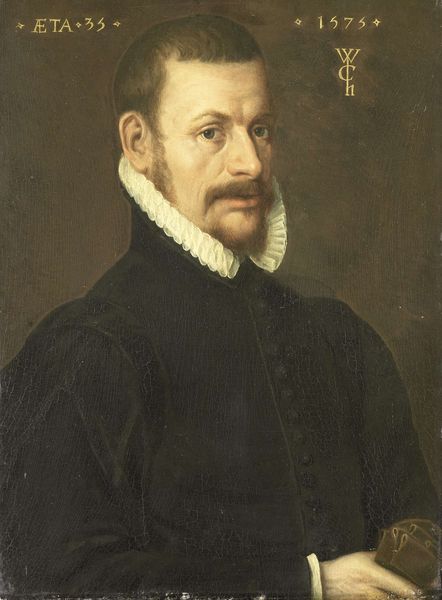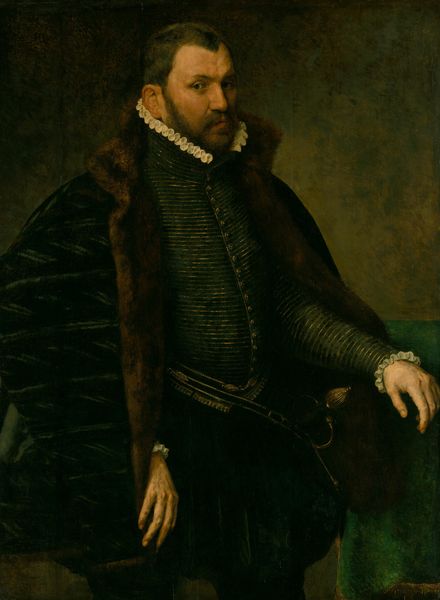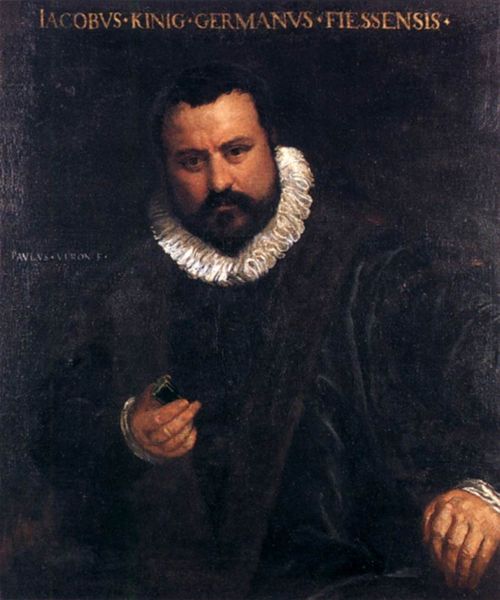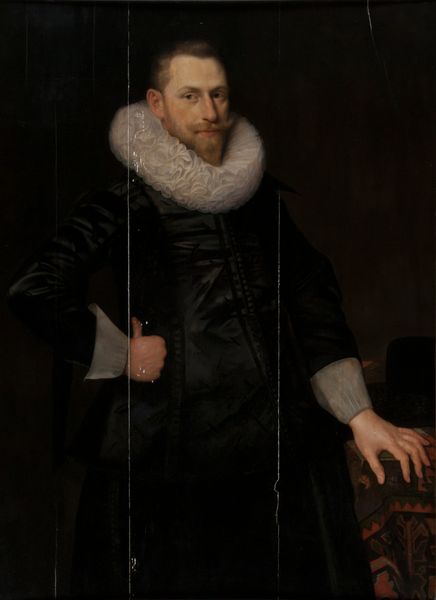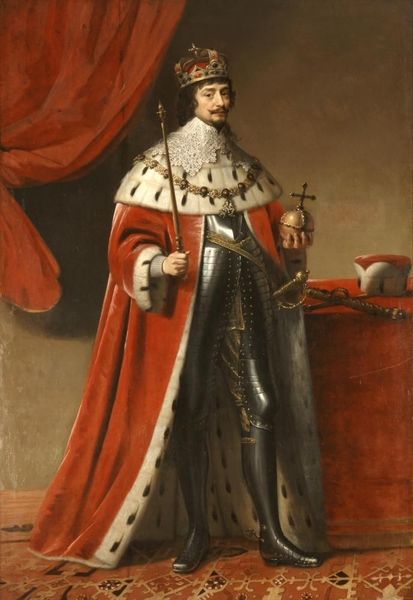
painting, oil-paint
#
portrait
#
baroque
#
dutch-golden-age
#
painting
#
oil-paint
#
famous-people
#
history-painting
Dimensions: 124.8 x 97.5 cm
Copyright: Public domain
Curator: Here we have Frans Hals’ "Portrait of Jacob Pietersz Olycan," completed around 1625, a commanding example of Dutch Golden Age portraiture rendered in oil on canvas. Editor: My immediate impression is of dark elegance. The sitter’s luxurious black attire, accented by the pristine white ruff, against a subdued background... it projects a sense of restrained power and affluence. Curator: Absolutely. Note the material details: the sumptuous velvet, the meticulously rendered lace. Hals' masterful brushstrokes suggest the tactile qualities of the textiles. This wasn't just art; it was a display of economic might and the rise of mercantile power in the Netherlands. The tools for creating this effect, after all, point directly to class structure. Editor: I am intrigued by the interplay of light and shadow, particularly how the highlights define Olycan's face, imbuing him with a certain presence. It's a wonderful example of how Hals uses formal devices to suggest personality. Curator: Exactly. Look at his posture; relaxed, confident, hand casually placed within his jacket. Hals suggests status without relying on overt symbols of power. Olycan was a wealthy soap boiler – and such merchants held real influence in the Dutch Republic, not via inherited nobility, but via industry and trade. He literally was able to cleanse the material world. Editor: It's true the composition emphasizes the figure’s dominance within the frame, using the dark colors to add gravitas and using color only sparingly, such as the pop of gold. Hals plays with textures brilliantly to draw us into Olycan’s persona through how he wants us to perceive him. Curator: And consider the collaborative effort involved. Someone had to produce that magnificent collar. Someone wove the luxurious fabrics. This is a portrait not just of an individual, but of an entire economic and social structure that supported his rise. It points towards labor and the network of manufacturing required. Editor: For me, this is where the magic happens, looking at how those aspects shape visual presence within this context of pictorial rendering, and that is how meaning emerges. Curator: Well, seeing both these layers allows for a more comprehensive look, in that we examine not only who but how and why. Editor: Indeed. In decoding these images, one unravels the threads of artistic representation as they merge into one form.
Comments
No comments
Be the first to comment and join the conversation on the ultimate creative platform.
